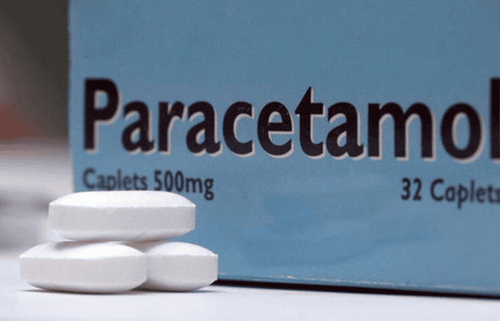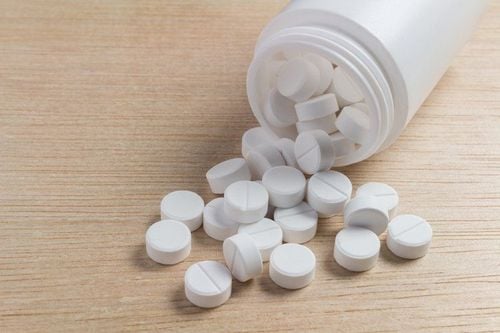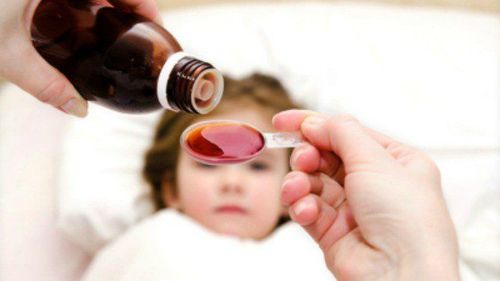This is an automatically translated article.
The article was consulted with MSc Duong Van Sy - Department of Pediatrics - Neonatology, Vinmec Hai Phong International General Hospital.In young children, frequent respiratory problems cause stuffy nose, runny nose, difficulty breathing due to phlegm and mucus contained in the airways causing congestion. Aspirating a child's nose can help open up the airways, making it easier for the child to breathe.
1. Why is it necessary to aspirate a child's nose?
Children's immune systems are not yet fully developed. Therefore, the resistance against harmful agents is still weak, and children are susceptible to infectious diseases. Typically, respiratory tract infections cause stuffy nose, runny nose, cough, sneezing...Most respiratory diseases have the presence of phlegm. Sputum can be in the bronchi, in the bronchial tree, in the nasal sinuses, in the oral cavity... causing obstruction, obstructed airway, wheezing, and difficulty breathing. In some severe cases, excessive phlegm reduces the circulation of air into the alveoli, causing the child to fall into respiratory failure, which can be life-threatening. At this time, it is very important to aspirate the child's nose and remove sputum from the nose and mouth system to create a clear airway for the child, helping the child restore the body's self-respiration.
2. Ways to suck the nose for children today

2.1 How to suck the baby's nose with a straw Putting ready-made physiological saline into the nose to help thin the nasal mucus: put the baby's head on one side and slowly instill 1 -2 drops of nasal drops into the nose, try to keep the liquid in the child's nose for about 10 seconds. Wait 2-3 minutes then hold the baby's head lower than the feet so the solution can go deeper into the nose. The stuffy nose will gradually reduce, the baby can breathe more easily. If the child is still wheezing after a few minutes, the saline instillation can be repeated. Squeeze the syringe to expel all the air and then place the syringe in front of the baby's nose so that the nose is blocked by the pump. Gently release the handle to create suction to pull the mucus out. Note: Do not put the pump tube too deep because it is easy to cause much damage. If the child has a protest against, do not rush to force the child to suck the mucus at that time, but try again later to avoid in the process of doing it will cause damage to the child's nose due to the child's movements.
After aspirating one nostril, it is necessary to clean the syringe again to remove all the mucus from the lumen and then continue to aspirate with the other side. Repeat the action as if sucking on the other side. If after suctioning the baby's nose is still stuffy after 5-10 minutes, repeat the whole suction process again. 2.1 How to suck the baby's nose with a tool Usually used is a U-shaped tool. The steps to aspirate are as follows:
Step 1: Place the tip of the tool in front of the child's nose
Insert the large nozzle into the baby's nose and head. The tapered instrument is connected to a long cylindrical tube, which stores mucus from the nose after being aspirated.
Step 2: Suction the mucus
Put on the mouth and suck the other end of the tool. The amount of mucus that can be removed depends on your suction power. Due to the special design of the applicator, you won't have to worry about sucking nasal mucus into your mouth.
Step 3: Clean the nose and tools
After aspirating the child's nose, it is necessary to clean the nose and tools with physiological saline, warm water or antiseptic solution.
3. Some common mistakes when sucking children's nose

However, scientifically, the mouth is home to many different types of bacteria. The use of mouth suction for children is generally invisible, creating a path of bacterial infection from the oral cavity to the child. This can increase the child's infection rate.
3.2 Using your hand to pick up your child's throat to vomit sputum That is completely wrong, the hands are not sterile and the child is still young, the oropharyngeal mucosa is still weak, the throat hook can hurt the oropharyngeal mucosa for the child , causing aspiration into the airways. On the other hand, a lot of throat hooking can increase the risk of gastroesophageal reflux later on for the child.
3.3 Overuse of nasal wash for children Overuse of nasal wash for children, do it many times a day even if the baby has no problems with the nose and throat. This abuse can lead to atrophy of the nasal mucosa, affecting the child's breathing function and sense of smell.
Aspiration for children is a necessary job to clear the blockage in the airways for children to help them regain the ability to breathe on their own. Properly and correctly sucking the nose will not hurt the baby but also ensure the effectiveness of nasal suction.
Please dial HOTLINE for more information or register for an appointment HERE. Download MyVinmec app to make appointments faster and to manage your bookings easily.














